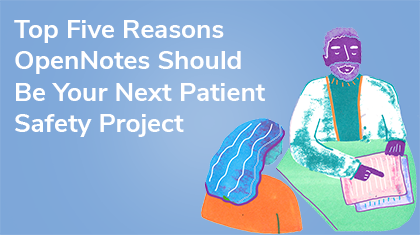
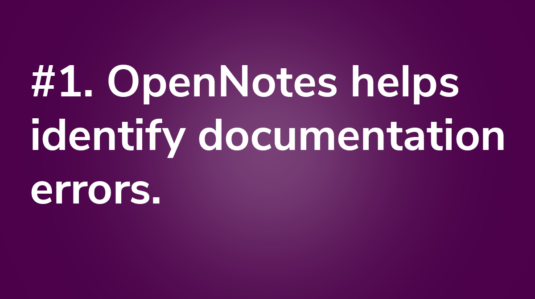 Identify documentation errors.
Identify documentation errors.
Medical records are prone to errors, including dosing, inactive or non-updated medications. Providers may manage thousands of charts, while patients review one: their own. They may be more likely to catch a mistake because they are most familiar with their own medications, history, family history, etc.
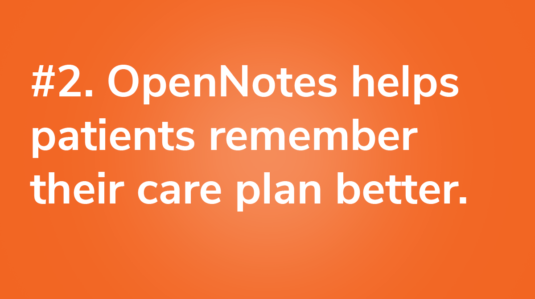 Help patients remember.
Help patients remember.
Clinic visits are often rushed, and conversations can be packed. Reading notes in a relaxed setting may allow patients to review their clinician’s recommendations and better remember the care plan.
Reading information, rather than hearing it verbally, may also assist patients with different learning styles, or those with hearing or cognitive impairment.
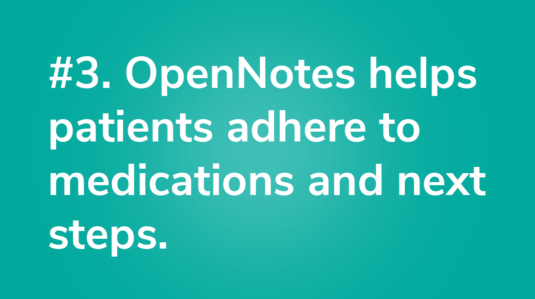 Promote medication adherence.
Promote medication adherence.
Patients may better remember to take their medications or take them more accurately if they read about them in their notes. Patients are not routinely notified of clinical or radiologic findings requiring follow up. Documenting and discussing such findings with patients can enable them to actively follow up with their providers about undiagnosed but persistent problems. And patients say reading notes helps them understand the reason for tests and referrals, motivates them to complete tests and follow up on referrals.
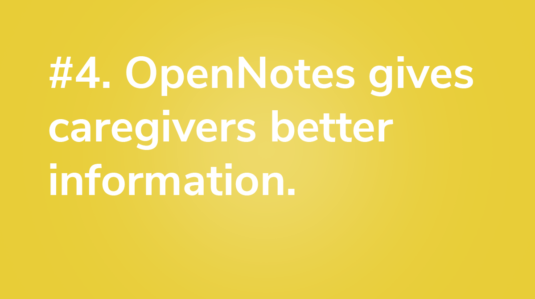 Support family and friend caregivers.
Support family and friend caregivers.
Review of notes, with patient permission, can keep caregivers stay up to date with medication or treatment plan changes.
Informal caregivers struggle to take care of vulnerable and often medically complex patients and may feel disconnected from the health care system if they are not at each appointment.
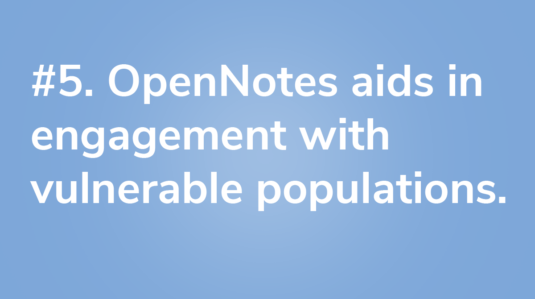 Engage vulnerable populations.
Engage vulnerable populations.
The act of opening notes to patients also sends a powerful message of inclusivity, fostering an environment conducive to informed consent and shared decision making.
Compared to white, more educated patients, nonwhite and less educated patients respectively, are 2-3 times more likely to report that notes are extremely important for engaging in care.




You must be logged in to post a comment.